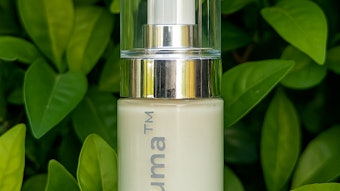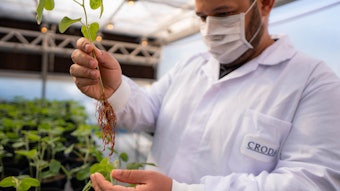- The odds that actives extracted from plant stem cells have an effect on human stem cells are high if this active penetrates the upper layers of the skin, but no more or no less than any other active with the same bioavailability.
- Stem cells in skin represent its true youth capital, its essential asset.
- Exciting results and new developments in stem cell research and applications are anticipated, but the beauty industry must communicate effectively and fairly with consumers so as not to confuse the issues.
A decade or so ago, stem cells made their way into the public’s consciousness. Research that had previously caught the attention of scientists but had been largely ignored by the public became front and center because of the controversy triggered by human embryonic stem cells (hESCs) research.
People knew what stem cells could do—the number of bone marrow transplants exploded in the 1990s—but no one was really paying attention. The results were great; no one really cared about how they were achieved. In addition, interest in science was slowly decaying for society in general.
But, thankfully, vocal groups with well-defined and often personal views in opposition to the use of stem cells were watching. And they set their sights on hESCs.
In a matter of months, all the scientific community was talking about was “the stem cell controversy.” Soon enough, the public was brought on board. Stem cells had become the hot topic of the moment. Science and society have come a long way since the start of the controversy. And the beauty industry has benefited from it because the public was receiving information about stem cells every day and became highly aware of their importance and potential—from a therapeutic standpoint in addition to an ethical standpoint.
Stem cells, too, and the controversy surrounding them are a perfect example of how an industry can take advantage of the public exposure of a given technology. We benefited from this in two ways: an interest from a research standpoint that sparked a lot of new work and important findings, and an interest from a public relations standpoint that prepared consumers to listen to what we could tell them about stem cells and their importance in skin care development.
And we are still learning about the potential of stem cells. I attended the Journées Européennes de Dermocosmétique (JED) in Lyon, France, in February, 2011—an event dedicated to stem cells. The breadth of the material presented confirmed the importance of stem cells and the extraordinary progress the beauty industry has made working with them. It also showed how much terrain is covered when the words “stem cells” are used.
This is an opportunity to untangle this vast and exciting field and provide some answers to a few common questions, such as:
- When using plant stem cells, is it really important to know that the active came from a plant stem cell or are the clinical benefits of the active more important?
- Did these plant stem cells bring new benefits or have we been using them all along without really paying attention?
- When talking about human stem cells, are we discussing the effect of the active on skin stem cells? Are these novel effects or just newly measured effects? Do they make a difference in what shows on the skin?
- Do in vitro stem cell-based models really make a difference for the beauty industry, or are they just another way to bring fancy claims when nothing can be shown in the clinic?
- Will the beauty industry ever use actual human stem cells or are they only a tool for the cosmetic surgery industry?
- And what is the deal with stem cells applied to cosmetic and reconstructive surgery applications?
Some of these questions are not easy to answer. But the wide scope of work presented at the stem cell meeting organized by the Centre Européen de Dermocosmetique—whose reputation when it comes to the quality of the scientific meetings it organizes is undisputable—can provide a really good idea of the quality of the research that is conducted today and what roles stem cells play today and will play in the future of the beauty industry.
Here is a summary of what is done with stem cells in the industry today.
Plant Stem Cells
Plant stem cells are a new source of actives. No more, no less. What makes them special? We didn’t know how to grow or preserve them. They can yield classes of compounds that are deeply linked to plant cell differentiation and growth.
Do these compounds have special effects on human cells? Not necessarily, although most actives making their way through the epidermis will affect stem cells one way or another. That is just common sense.
Are plant and human stem cells related? Not at all. It is not because a compound was extracted from plant stem cells that it automatically has measurable effects on human skin stem cells. We know it does if we test for it, and the progress made in the culture of human stem cells have allowed us to measure those effects.
Again, the odds that actives extracted from plant stem cells have an affect on human stem cells are high if this active penetrates the upper layers of the skin, but no more or no less than any other active with the same bioavailability.
When using the term “plant stem cells,” we tend to confuse the issue and lead consumers to believe that there is a link between the origin of the active and its effects. It would be more appropriate to talk about meristemic cells, which is the proper term for plant stem cells. This is not to say that there aren’t great actives coming from meristemic cells and that this research and development isn’t worthwhile.
Growing effective meristemic cells is not easy, but these actives present a wealth of benefits, both from an activity standpoint as well as from a sustainability standpoint—once you have them, you can theoretically make as many plants as you want with that initial stem cell load. So, you should be able to grow rare plants indefinitely under highly controlled conditions. That is the key argument that researchers at Italy’s Istituto di Ricerche Biotechnologiche, S.p.A. (IRB) make.
Human Stem Cells
In short, and as shown by M. Rathman-Josserand of L’Oréal, stem cell research allows for the following:
- Novel concepts and more effective cosmetic treatments for the skin: anti-aging, photo protection, preservation in the face of environmental stresses;
- Novel concepts and cosmetic treatments for preventing hair loss and graying;
- Development of innovative tissue engineering technologies for in vitro testing purposes;
- Predictive toxicology: novel cell systems for the replacement of certain animal models.
A Primer
Research on human stem cells has allowed the industry to understand human skin much better. By understanding human stem cells and their awesome potential, skin aging can be better addressed and new R&D tools for the development of better actives can be developed.
Stem cells in the skin represent its true youth capital, its essential asset. They can produce new cells, almost indefinitely.
What makes stem cells age is what makes the skin age. But, because of that incredible reproduction potential, stem cells must be manipulated very carefully. When they start reproducing uncontrollably, they don’t differentiate properly and the risk there is cancer. So it important to stay away from tactics that would affect the renewal rate of stem cells. The real challenges, the important stakes, lie elsewhere, and it is by understanding how stem cells function and behave in the skin that we can harvest their full potential.
The Ability to Search and Rescue
There are two different sources of skin stem cells. Epidermal stem cells are located in the basal layer of the epidermis and at the base of hair follicles. The epidermal stem cells produce keratinocytes and are devoted to the replenishment of the normal epidermal keratinocytes in a normal cell turnover process. There have been many studies published on these stem cells.
The follicular stem cells (located in the hair bulge—not the hair bulb ) produce the hair follicle, as well as keratinocytes. They are involved with repair mechanisms, and have the ability to migrate to the site of injury. Normally, they stay in a quiescent (rest) state and are mobilized only for repair. There are many of those because there are many hair follicles on the skin—including those of vellus hair, which are invisible.
Whereas keratinocytes migrate vertically to the surface of the skin and become corneocytes, follicular stem cells from the hair bulge move sideway to the damaged sites. Recent research has shown that they can move up to 100 µm around the hair follicle. This is the first challenge presented when dealing with s
kin stem cells. How do we get them to move where we want them to?
Maintaining the Integrity of the Stem Cells’ Capital
The second challenge that stem cells present, though not as sexy on paper as that of getting them to go where they can do some effective repair, is no less important: Maintaining their integrity is paramount to their ability to keep producing new cells and help skin renew and repair itself.
It is important to protect stem cells’ DNA as research seems to show (and it has to be confirmed) that their DNA could be less robust than the DNA of differentiated cells. The repair rate of that DNA in particular seems to be less.
Protecting the telomeres (the end pieces of a chromosome, which, when they become too short, prevent the cell from dividing thus leading it to die) is especially important.
For now, one strategy is to maintain stem cells in a quiescent state, in their niche, well attached with ligands [molecules or molecular groups that bind to another chemical entity] at the bottom of the basal membrane, under optimal conditions.
Using Stem Cells to Study Active Raw Materials
The development of novel stem cell-based in vitro models allows better exploration of actives, from both an activity and a toxicity standpoint.
Using Human Stem Cells to Beautify the Human Body
Many people believe that human stem cells are actually used in cosmetic treatments. As of today, this is not the case, and it is difficult to forecast how or if we will ever be able to “inject” human stem cells into the skin with the tools that are currently at our disposal.
Techniques using human stem cells to improve the appearance of the face are used today, but are the exclusive domain of cosmetic surgery. However, experimental cosmetic and reconstructive surgery show amazing results, and although the beauty industry will not be able to use them, they should be noted.
The Future of Stem Cells in Cosmetics
The holy grail of cosmetics is eliminating wrinkles, and effectively addressing wrinkles with stem cell technologies would rely on getting stem cells to move to the site of repair.
A wrinkle can be considered a wound that, by definition, can never heal as it is triggered by movement that cannot be eliminated unless the tissue stops moving.
This is why Botox works so well—it prevents muscles and, therefore, skin from moving. But it is also very limiting. Can we live with perfectly immobile faces for the sake of preventing wrinkles? So, getting back to the issue at hand, if we find a way to drive stem cells to the bottom of the wrinkle, we could improve their appearance dramatically.
When an injury occurs in the skin, growth factors involved in, among other processes, normal cell growth and wound healing are produced. They stimulate stem cells. In the past, one such transforming growth factor ß1 (TGFß1), was used to accelerate dermal and epidermal repair. The challenge today is to reactivate latent TGFß1.
Creating a signal to incite the cells into activating a repair process is one way to keep replacing the compromised cells.
Once the stem cells are persuaded to move, the next challenge is to get them to move exactly where they are needed, and current physical delivery devices do not work.
Exciting results and new developments can be anticipated. But we must insist on the absolute need to communicate effectively and fairly so as not to confuse the issues, to allow for the true science to be recognized as such, and not let junk science and border line claims take over a market where it’s known that consumers grow weary of hype and exaggeration.
Stem cells hold great potential as research tools and treatment targets, but are also fragile and potentially dangerous if mishandled. Manipulating, creating and marketing stem cells requires responsible research and communication.
Marie Alice Dibon, PharmD, is the principal at Alice Communications, Inc., helping companies in the life science sector to develop innovative technologies.










